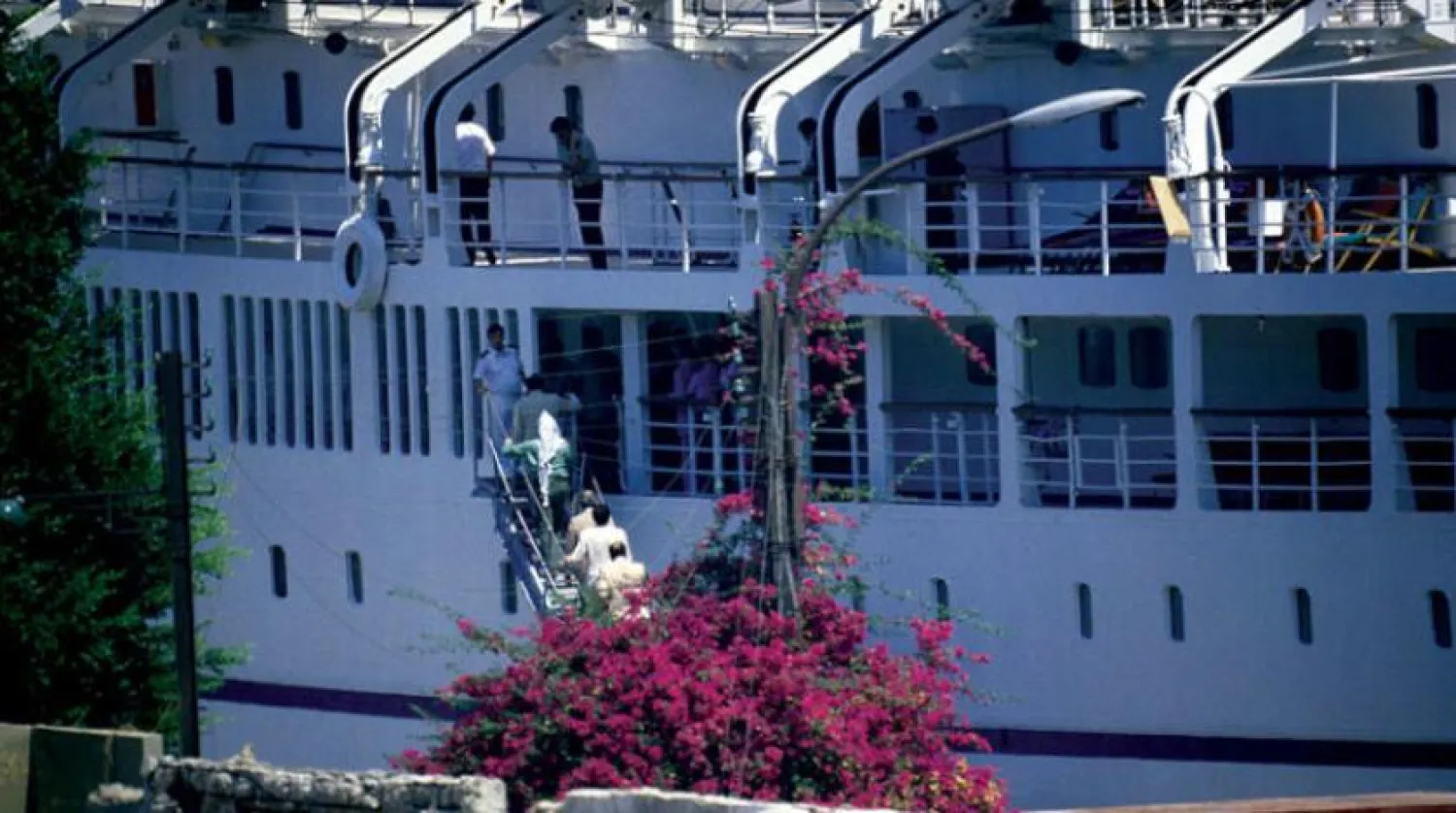On this day 40 years ago, Palestinian President Yasser Arafat departed Beirut, which was under Israeli siege, to Tunisia, his first leg on a journey back to a homeland smaller than his dreams.
It was the end of an era, in which the Palestinian player was a mainstay and part of two conflicts; regional with Israel, and local with the Lebanese right camp.
Arafat’s departure left a void in the Lebanese decision-making circle. New leaderships started to emerge, mainly the head of the Amal movement, Nabih Berri, and the leader of the Progressive Socialist Party (PSP), Walid Jumblatt.
Ironically, Iran entered the Lebanese arena through the establishment of Hezbollah, which soon became the headline of the new phase, after inheriting cadres from Fatah, and then assuming the role of Syria, following the withdrawal of Bashar al-Assad’s forces from Lebanon in 2005.
In an interview with Asharq Al-Awsat, Jumblatt recalled the day when, along with Berri and other Lebanese leaders, he bid farewell to Arafat, who left besieged Beirut in 1982. He described that day as “the end of the independent Palestinian national decision phase that Arab regimes and Israel fought against.”
Jumblatt said: “The problem with the Palestinian revolution is that it happened outside its land.”
He continued: “Later, Arafat returned to Palestine, but through the Oslo Agreement, which did not specify the final points for settlements and Jerusalem. The two issues were left vague, and the US administration later benefited from these gaps. There were mere negotiations; one of their heroes was Mr. Martin Indyk, who later presented us with a new book about the ingenuity of [former US Secretary of State Henry] Kissinger.”
Regarding the “emotional struggle”, Jumblatt said: “The most beautiful days we lived in the joint Lebanese-Palestinian struggle were those of the siege of Beirut, which did not fall militarily, but later collapsed politically.”
He recalled: “The battle of the Al-Mathaf [crossing] was pivotal. At that time, the Israeli shelling began at midnight and stopped at five in the evening the next day… It was my first visit to then-Soviet Ambassador Alexander Soldatov, at the embassy.”
“I remember that he greeted me at the entrance, and warned me not to approach the cluster bombs that were scattered in the embassy garden. The embassy had no shelter, so the ambassador and his wife were taking refuge in the building during the bombing with minimal protection.”
“I remember at that time that I walked in the streets of Beirut and saw the people picking up what remained in the aftermath of the bombarding. Some shouted at each other: ‘Praise be to God for your safety!’”
Jumblatt believes that Arafat’s “circumstances made him withdraw because he was on a land that was not his own, and he accepted the Oslo Agreement because he was between the anvil of the regimes and the Israeli hammer.”
He adds: “Later in Beirut, the resistance was born, from Kamal Jumblatt’s house in Mar Elias. The Lebanese national resistance carried out one operation after another, from Beirut to the Mountain, Sidon and every occupied Lebanese land.”
Regarding the internal file, Jumblatt believes that there were “mistakes in the calculations...”
“The Israeli invasion should have stopped for some at the Awali River line near Sidon, but the calculations of the Lebanese right and then Israeli Defense Minister Ariel Sharon were different, and led to the invasion of the Mountain and Beirut,” he said.
“This had catastrophic repercussions on [Christian and Islamic] coexistence and national unity,” according to Jumblatt.
Derbas: Sunnis tasted bitterness of Arabism
Former minister and president of the North Lebanon Bar Association, Rashid Derbas, told Asharq Al-Awsat" “It is difficult to say that Lebanon learned the lesson from what happened at that time.”
“The problem is that the sects have each been drawing separate conclusions since the establishment of Greater Lebanon until today… So these tests took a hundred years.”
He explained: “In the first stage, the role assumed by the Christian sect neglected the vital dimension, which pushed other sects to search for another refuge, until the main juncture in the so-called defeat of 1967, which shocked the Arabs.”
“The Muslims searched for other means and alternative destinations and it became firmly established in our mind that there was no solution except through the war of liberation, and at that time it was up to the ‘Palestinian resistance.’”
“We walked far behind our illusions, thinking that they would bridge the gap caused by the defeat, until we finally discovered that this resistance had become a system like any other, and that we put an unbearable burden on Lebanon, through the Lebanese National Movement,” Derbas added.
“The Sunnis tasted the bitterness of Arabism in the relationship with the Palestinian resistance and Syria, and they discovered that they had nothing but the Lebanese state.”
Derbas recalled: “At that time, the Christians, who used to rely on France, the caring mother, sought refuge in a loving sibling, Israel, to later find out that it was a failed adventure. They had nothing but the Lebanese state.”
“It seems that today we are in the phase of the Shiite experience,” he remarked.
While Derbas expressed his conviction that all sects would return to their senses, he said: “The danger at this stage is that what remains of the state may not support the repercussions of this matter. We may lose the country as a result of the failure of the Shiite-Iranian experience.”









